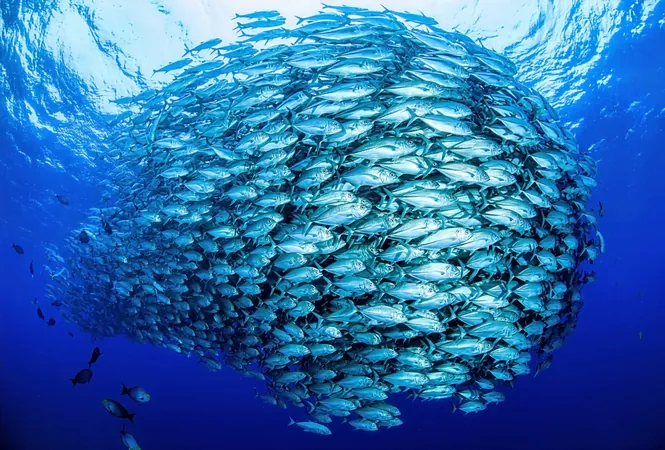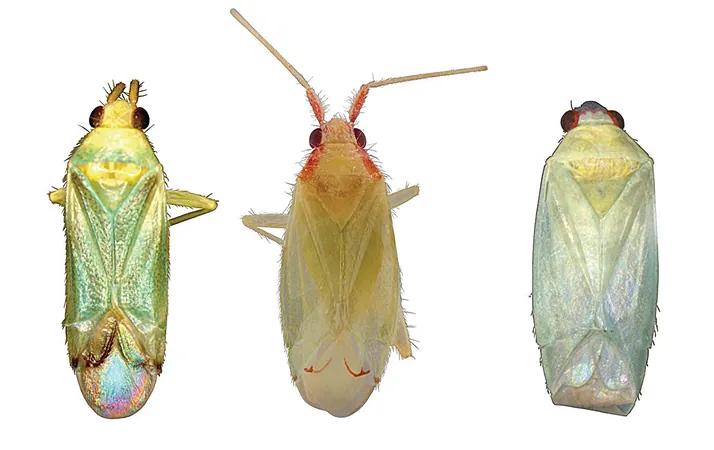
Shocking Discovery: The Largest Predation Event Ever Recorded Involves Millions of Fish!
2024-10-30
Author: Li
In the underwater world, there’s a new, startling revelation that challenges the long-held belief that "safety is in numbers." Contrary to this popular notion, recent scientific research reveals that fish swarming together may actually increase their risk of predation, making them more vulnerable to their natural enemies.
The Great Fish Swarm of the Arctic
A groundbreaking study led by researchers from MIT and Norwegian oceanographers uncovered this phenomenon during a major research expedition off the Norwegian coast. The investigation coincided with the capelin spawning season—the annual migration of these small Arctic fish, which are about the same size as anchovies. Every February, capelin travel southward from the edges of the Arctic ice sheet to spawn along the Norwegian coast, an area also frequented by their primary predator, the Atlantic cod.
During the expedition, researchers witnessed an astonishing event: as capelin began to spawn en masse, they became targets for groups of cod that took advantage of this food bonanza.
Unprecedented Mass Predation Event
Published in *Nature Communications Biology*, the study details the largest predation event recorded to date, which demonstrated the immense scale of this underwater drama. Utilizing advanced sonic imaging technology, the team captured the interaction between the spawning capelin and the ravenous cod. As capelin gathered into massive shoals, the cod began to gather as well, creating an even larger predator group.
In a swift and relentless hunt, the cod consumed over 10 million capelin in a breathtaking display of nature—this event not only set records for the number of fish involved but also for the expansive area over which it unfolded. Yet, despite the staggering number of fish consumed, the incident had negligible effects on the overall capelin population, as the number devoured represented only a tiny fraction, around 0.1%, of the total spawning population.
Impacts of Climate Change
The ramifications of such predation events take on greater significance in the context of climate change. As Arctic ice continues to melt, capelin will need to swim longer distances to reach their spawning sites, heightening their vulnerability to predators. Nicholas Makris, a professor at MIT, expressed concerns over how changing environmental conditions could lead to rapid shifts in predator-prey dynamics.
“There’s a risk that as ecological hotspots diminish, catastrophic predation events could have dire consequences, not just for the capelin but for broader marine ecosystems reliant on them,” he noted.
Innovative Technology at Work
The success of this research relied on pioneering acoustic technology known as the Ocean Acoustic Waveguide Remote Sensing (OAWRS) system. This innovative setup utilized an array of sonar equipment to map the ocean's depths and monitor fish behavior from a distance of several kilometers, allowing researchers to visualize the interaction of life in real-time.
The researchers ingeniously distinguished between different fish species based on the unique sound resonances produced by their swim bladders. This multispectral approach enabled them to differentiate the deep-resonating cod from the higher-pitched capelin, providing critical insights into marine life dynamics.
A Call for Continued Research
The significant findings from this study signal a pressing need for ongoing research into marine predation patterns and the ecological impacts of climate change. “As we observe fish populations nearing collapse, understanding their behavior in these last thriving shoals becomes crucial,” Makris emphasized.
This remarkable study illustrates not just a captivating aspect of marine biology but also highlights the intricate balance of oceanic ecosystems in peril. As we look ahead, continued exploration and monitoring will be essential to ensure the sustainability of fish populations and the health of marine environments worldwide.
Prepare to be amazed as researchers delve deeper into these underwater mysteries. Stay tuned for more updates on this and other riveting discoveries!




 Brasil (PT)
Brasil (PT)
 Canada (EN)
Canada (EN)
 Chile (ES)
Chile (ES)
 España (ES)
España (ES)
 France (FR)
France (FR)
 Hong Kong (EN)
Hong Kong (EN)
 Italia (IT)
Italia (IT)
 日本 (JA)
日本 (JA)
 Magyarország (HU)
Magyarország (HU)
 Norge (NO)
Norge (NO)
 Polska (PL)
Polska (PL)
 Schweiz (DE)
Schweiz (DE)
 Singapore (EN)
Singapore (EN)
 Sverige (SV)
Sverige (SV)
 Suomi (FI)
Suomi (FI)
 Türkiye (TR)
Türkiye (TR)